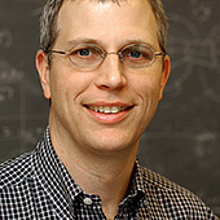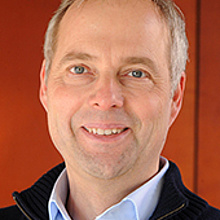Jump to the content
- {{#headlines}}
- {{title}} {{/headlines}}

Contact
Teresa Havlicek
Nina Hafeneger
Press, Communications and Marketing
Phone: +49 228 833-423/450
Fax: +49 228 833-441
presse[at]avh.de
Georg Scholl
Head of
Press, Communications and Marketing
Phone: +49 228 833-258
Fax: +49 228 833-441
presse[at]avh.de
Robert J. Schoelkopf and Jörg Wrachtrup
Quantum Nano Science

Robert J. Schoelkopf, professor at Yale University, is one of the inventors of the superconducting qubits. Superconductors transport electricity with zero electrical resistance. The qubits which Robert Schoelkopf developed with his colleagues Michel Devoret and Steve Girvin at Yale University consist of superconducting electronic circuits. At very low temperatures, these circuits can behave in a certain sense like a single atom: even though roughly a thousand billion electrons move on their trajectories in an electric circuit without hindrance, the circuit can assume defined energy states that are very similar to those of an atom. The lowest two can encode the “0” and “1” of a data bit, playing the same role as the orientation of the spin in a magnetic field.
With the superconducting qubits, which have diameters of a few micrometres or even millimetres, Schoelkopf’s team has shifted the boundaries of the quantum regime from the nano-dimension towards larger objects. Physicists have long assumed that the sometimes bizarre quantum effects can be observed only in extremely small dimensions. They thought that larger systems would have too many interactions which destroy the usually fragile quantum states, which are of interest for applications in a novel type of information processing. Currently, physicists are still testing how large systems can actually be and yet still be subject to the laws of quantum physics. Robert Schoelkopf has set a benchmark with the superconducting qubits in this search for the boundaries of the quantum world.

Jörg Wrachtrup’s research focuses on isolated spins in solid bodies, mainly in diamonds, but also in other materials such as silicon carbide. Spin is a quantum mechanical property of electrons and atomic nuclei, for example, and turns these particles into tiny magnetic needles that can align themselves in an external magnetic field. The amount of energy required to change the orientation also depends on the chemical environment of the spin. Nuclear magnetic resonance tomography thus provides, for example, a detailed image of the various tissues in the human body.
Jörg Wrachtrup, professor at the University of Stuttgart and Fellow of the Max Planck Institute for Solid State Research, was the first to succeed in reading out the orientation of a single spin in a diamond and controlling it. In a diamond, the single spins can be found where a nitrogen atom instead of a carbon atom is incorporated into its crystal lattice. The spin of such an NV centre – short for Nitrogen Vacancy centre – reacts very sensitively to other spins in its vicinity. Wrachtrup’s team, and meanwhile several other research groups around the world as well, is thus working on a nuclear magnetic resonance tomograph with a spectrum of possible applications ranging from nanotechnology through to cell biology.
“These quantum sensors can provide us with completely new insights into materials on the nanometre scale,” says Jörg Wrachtrup. “I even think it is realistic to use it in cell biology or even in living tissue.” For Jörg Wrachtrup, the prize money associated with the Max Planck Research Award comes just in time, as it can be used to fund a project over a longer period as well. He can envisage using the funds to further develop the quantum sensors for these difficult applications.
The spins of the NV centres are suitable not only as the probes of a nanoscopic nuclear magnetic resonance tomograph, but also as quantum bits or qubits, i.e. as the smallest computing unit of a quantum computer. This is down to the fact that the “0” and “1” of a data bit can be stored in the orientation of the spin. Jörg Wrachtrup’s team has already created a simple computing register from entangled qubits with one of these NV centres and used it to execute basic operations of a quantum computation.
Further Information
- Max Planck Research Award Winners 2016
- Max Planck Research Award Winners 2015
- Max Planck Research Award Winners 2014
- Max Planck Research Award Winners 2013
- Max Planck Research Award Winners 2012
- Max Planck Research Award Winners 2011
- Max Planck Research Award Winners 2010
- Max Planck Research Award Winners 2009
- Max Planck Research Award Winners 2008
- Max Planck Research Award Winners 2007
- Max Planck Research Award Winners 2006
- Max Planck Research Award Winners 2005
- Max Planck Research Award Winners 2004
